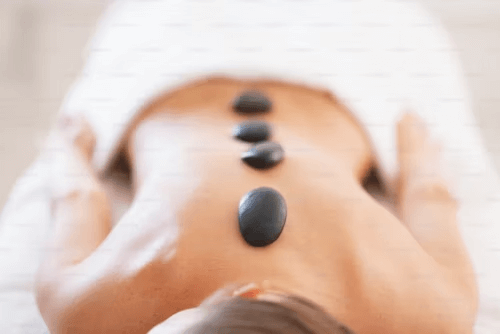The Sleep Position That Can Ease Lower Back Pain: What to Know
Lower back pain is a common ailment that can disrupt daily activities and impair the quality of life for many individuals. While various factors contribute to lower back pain, including injury, muscle strain, and degenerative conditions, one often overlooked aspect is the role of sleep position. It may come as a surprise, but the position you sleep in can significantly impact the health of your lower back.
Understanding Lower Back Pain
Before delving into the relationship between sleep position and lower back pain, it is essential to understand the intricacies of this condition. Lower back pain can arise from multiple causes, including muscle strain, herniated discs, arthritis, and spinal stenosis. It can range from mild discomfort to severe pain, ultimately affecting a person’s ability to perform daily tasks and get a good night’s sleep.
Lower back pain is a common ailment that affects millions of people worldwide. It can be debilitating, causing individuals to miss work, limit their physical activities, and experience a decreased quality of life. Understanding the causes and symptoms of lower back pain is crucial in finding effective treatment and prevention strategies.
Causes of Lower Back Pain
Injury: Trauma or strain caused by improper lifting techniques, sudden movements, or accidents can lead to lower back pain. A sudden fall or injury during sports activities can also result in back pain. It is important to be cautious and use proper body mechanics when engaging in physical activities to minimize the risk of injury.
Structural Conditions: Conditions such as herniated discs, degenerative disc disease, spinal stenosis, and arthritis can cause lower back pain. These conditions often result from wear and tear on the spine, leading to instability and nerve compression. Seeking medical attention and following a comprehensive treatment plan can help manage these structural conditions and alleviate lower back pain.
Postural Issues: Poor posture while sitting, standing, or lifting heavy objects can contribute to lower back pain. Maintaining a prolonged slouched position or not properly supporting the spine can place undue stress on the lower back muscles and ligaments. Practicing good posture and using ergonomic techniques can help prevent and alleviate lower back pain caused by poor posture.
Lifestyle Factors: Sedentary lifestyles, obesity, and lack of exercise can weaken the back muscles and contribute to lower back pain. Poor physical fitness and excess body weight can strain the structures in the lower back, leading to discomfort and pain. Engaging in regular physical activity, maintaining a healthy weight, and incorporating exercises that strengthen the core and back muscles can help prevent and manage lower back pain.
Symptoms and Diagnosis of Lower Back Pain
Symptoms of lower back pain may vary depending on the underlying cause. However, common signs include dull or sharp pain, muscle stiffness, difficulty standing or walking, and limited range of motion. It is important to pay attention to these symptoms and seek medical attention if they persist or worsen.
When diagnosing lower back pain, a healthcare professional will conduct a thorough examination, which may involve imaging tests such as X-rays, MRIs, or CT scans, to determine the cause of your lower back pain. These diagnostic tools can provide valuable insights into the structures of the spine and help identify any abnormalities or injuries that may be contributing to the pain.
It is important to remember that each individual’s experience with lower back pain may be unique, and a personalized approach to treatment is necessary. Treatment options for lower back pain may include physical therapy, medication, chiropractic care, or, in severe cases, surgery. Working closely with healthcare professionals and following their recommendations can help manage and alleviate lower back pain effectively.
The Importance of Sleep Position
Proper sleep position is often overlooked when addressing lower back pain, but it plays a crucial role in alleviating discomfort and promoting spinal alignment. The position you choose to sleep in can either enhance or exacerbate your lower back condition.
How Sleep Position Affects the Body
Sleep position directly affects the alignment of the spine, which, in turn, impacts the health of the lower back. The wrong sleep position can exert excessive pressure on the spinal structures and exacerbate existing pain or discomfort. Conversely, the right sleep position can potentially relieve pressure on the lower back and promote healing.
The spine has a natural curvature, and maintaining this alignment is essential during sleep. By sleeping in a position that supports the natural curves of your spine, you can help reduce strain on the muscles, ligaments, and discs in the lower back. Additionally, proper sleep position can minimize compression on the nerves and facilitate spinal decompression, offering relief from pain.
Common Sleep Positions and Their Impact
While everyone has their preferred sleep position, certain positions are more favorable for individuals with lower back pain. Let’s explore the common sleep positions and their impact on the lower back.
- Back Sleeping: Sleeping on your back is generally considered the best position for spinal alignment. It evenly distributes body weight and allows the spine to rest in its natural alignment. Placing a pillow under your knees can further support the lower back’s natural curve and alleviate pressure on the joints and discs.
- Side Sleeping: Sleeping on your side can be beneficial for individuals with lower back pain. This position helps maintain spinal alignment and reduces the risk of snoring or experiencing sleep apnea. Placing a pillow between your knees can promote proper hip and spine alignment, reducing lower back strain.
- Stomach Sleeping: Sleeping on your stomach is generally discouraged for individuals with lower back pain. This position strains the neck and lower back, potentially exacerbating discomfort. If you prefer sleeping on your stomach, placing a pillow under the pelvis can help maintain a more neutral spine alignment.
Now, let’s delve deeper into the benefits of each sleep position and explore additional tips for optimizing your sleep posture.
Back Sleeping
When you sleep on your back, gravity helps distribute your body weight evenly, reducing pressure on specific areas, including the lower back. This position allows your spine to rest naturally, promoting proper spinal curvature. Placing a pillow under your knees can provide additional support to the lower back’s natural curve, relieving strain on the joints and discs. Moreover, back sleeping can help prevent wrinkles and skin breakouts, as there is minimal contact between your face and the pillow.
For individuals who snore or suffer from sleep apnea, back sleeping can be particularly beneficial. This position helps keep the airways open, reducing the likelihood of breathing disruptions during sleep. However, it’s important to note that back sleeping may not be suitable for everyone, especially those with certain medical conditions like sleep apnea or acid reflux.
Side Sleeping
Side sleeping is a popular sleep position that offers several benefits for individuals with lower back pain. By sleeping on your side, you can help maintain spinal alignment and reduce strain on the lower back. Placing a pillow between your knees can further promote proper hip and spine alignment, alleviating pressure on the lower back. Side sleeping can also help reduce snoring and improve sleep quality for individuals with sleep apnea.
While side sleeping is generally considered safe and beneficial, it’s important to choose the right mattress and pillow to ensure optimal support. A mattress that is too firm or too soft can lead to improper spinal alignment, causing or exacerbating lower back pain. Similarly, using a pillow that is too high or too low can strain the neck and shoulders, leading to discomfort.
Stomach Sleeping
Sleeping on your stomach is generally discouraged for individuals with lower back pain, as it can place strain on the neck and lower back. This position can cause the spine to arch unnaturally, leading to increased pressure on the discs and joints. However, if you prefer sleeping on your stomach, there are ways to minimize the potential negative effects.
Placing a pillow under the pelvis can help maintain a more neutral spine alignment, reducing the strain on the lower back. Additionally, using a thin pillow or no pillow for the head can help prevent excessive neck extension. It’s important to note that stomach sleeping may not be suitable for everyone, especially those with pre-existing back conditions or chronic pain.
Remember, finding the right sleep position for your lower back pain may require some trial and error. It’s essential to listen to your body and make adjustments as needed. Consulting with a healthcare professional or a sleep specialist can also provide valuable guidance tailored to your specific needs.
The Optimal Sleep Position for Lower Back Pain
While back and side sleeping are generally considered favorable for lower back pain, there is one sleep position that stands out as particularly helpful: the fetal position.
Benefits of the Recommended Sleep Position
The fetal position entails sleeping on your side with your knees drawn up towards your chest. This position mimics the natural curve of the spine, reducing strain on the lower back’s joints, discs, and muscles. By gently rounding the back, the fetal position relieves the pressure on the vertebrae and promotes spinal decompression. This can provide substantial relief for individuals suffering from lower back pain, allowing them to wake up refreshed and with reduced discomfort.
Adjusting to the New Sleep Position
Transitioning to the fetal position might require some adjustments if you are used to sleeping in a different position. It is essential to choose a supportive mattress and pillow to ensure optimal sleep comfort. Experimenting with different pillow sizes and firmness levels can help find the perfect support for your head, neck, and spine. Additionally, maintaining a proper sleep hygiene routine, including consistent bedtimes and creating a sleep-friendly environment, can facilitate the adjustment process.
Other Ways to Alleviate Lower Back Pain
While sleep position is crucial for managing lower back pain, there are other lifestyle changes and medical treatments that can provide additional relief.
Lifestyle Changes for Lower Back Pain Relief
Regular exercise that focuses on strengthening the core and back muscles can provide significant relief from lower back pain. Engaging in activities such as swimming, yoga, or walking can help improve flexibility and strengthen the muscles that support the spine. Maintaining a healthy weight and avoiding smoking are also crucial for reducing strain on the lower back.
Medical Treatments for Lower Back Pain
In severe cases, medical interventions may be necessary to alleviate lower back pain. These interventions could include physical therapy, chiropractic adjustments, acupuncture, or anti-inflammatory medications. Injections or surgery may be recommended in cases where conservative treatments fail to provide relief.
Frequently Asked Questions About Lower Back Pain and Sleep Position
Can Changing Sleep Position Instantly Relieve Back Pain?
While the right sleep position can provide significant relief from lower back pain, it is important to note that immediate results may not be guaranteed. It may take time for your body to adjust to the new sleep position and for the benefits to become apparent. Additionally, incorporating other lifestyle changes and utilizing medical treatments alongside adjusting your sleep position can enhance the effectiveness of pain management.
What If I Can’t Sleep in the Recommended Position?
If the recommended sleep position does not work for you or causes discomfort, it is essential to consult with a healthcare professional. They can evaluate your specific situation and provide tailored recommendations to address your lower back pain. The key is finding a sleep position that promotes spinal alignment and minimizes pressure on the lower back structures while also ensuring your overall comfort.
By understanding the relationship between sleep position and lower back pain, you can take proactive steps to alleviate discomfort and promote a restful night’s sleep. Remember, proper sleep position, along with other lifestyle changes and medical interventions, can significantly improve your lower back health and optimize your overall well-being.




